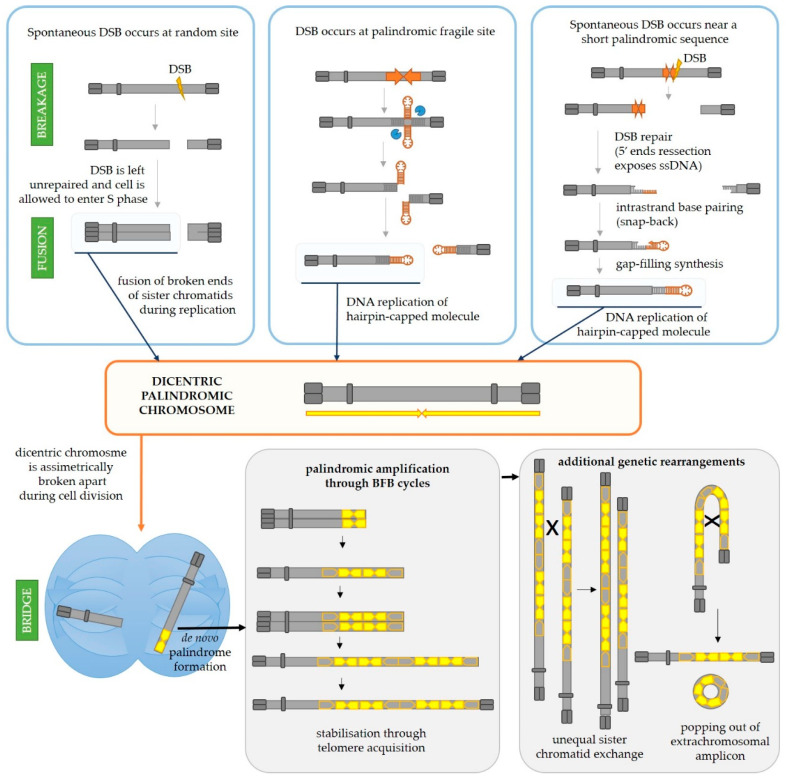Figure 3.
Mechanisms responsible for initiation of de novo palindrome formation followed by subsequent palindromic amplifications and additional genetic rearrangements typical for cancer cells. On the left upper panel, the initial steps of the breakage-fusion-bridge (BFB) mechanism are shown. If a DSB is left unrepaired and the DNA is subsequently replicated, the broken ends of sister chromatids can fuse to form two palindromic chromosomes, one of which will be dicentric. Middle and right upper panels depict alternative mechanisms for formation of a palindromic dicentric chromosome, an initiating event for palindromic amplification. In the middle panel, a DSB is mediated by a secondary structure-forming palindrome in the genome. As explained in detail in Section 2, this results in hairpin-capped DSB ends. If left unprocessed, the replication of the centromere-proximal hairpin-capped molecule results in an dicentric chromosome. On the upper right panel, the fold-back priming mechanism is depicted. If a DSB occurs in the vicinity of a palindrome or short inverted repeats, the DSB repair, which normally involves 5′ end resection, will expose the repeats in the ssDNA form. This can allow for intrastrand base pairing (fold-back) and the folded 3′-end can then serve as a primer for gap-filling DNA synthesis. The resulting hairpin-capped molecule can also lead to occurrence of a dicentric chromosome upon DNA replication. Regardless of the initial mechanism of formation, the palindromic dicentric chromosome can be asymmetrically broken during cell division and one of the resulting chromosomes will carry a de novo formed palindrome (palindromic duplication). Additional BFB cycles can result in palindromic amplifications of certain genomic regions and such chromosome could at some point become stabilized by telomere addition, thus breaking iterations of BFB cycles (lower middle panel). However, additional genetic rearrangements and gene copy number gains or losses can arise through unequal sister chromatid exchange and intrachromosomal recombination between the acquired repeats which can result in the popping out of an extrachromosomal amplicon (double minute chromosome), also a typical feature of cancer cells.

